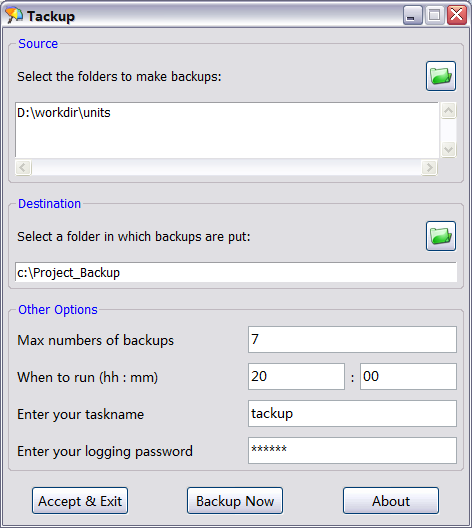简单的备份工具:Tackup
最近在工作中要每天对重要的数据进行备份,根据自己的要求,用Tcl/Tk写了一个简单的备份工具。
开发周期:1.5天
功能特点:
需要加强:
- 以zip文件保存,节省空间
- 可以立即备份,也可以生成计划任务,每天定时备份
- 可以设置保留的备份数目
界面如下:
- 验证输入参数的有效性
- ....................

下载地址:
http://cid-2c79bd952217aee4.skydrive.live.com/self.aspx/App/tackup.exe
有bug请联系:mzgcoco@gmail.com





 Tackup是一款使用Tcl/Tk开发的简单备份工具,支持即时备份与定时任务,能够以ZIP格式保存文件以节省存储空间,并允许用户设定保留的备份版本数目。
Tackup是一款使用Tcl/Tk开发的简单备份工具,支持即时备份与定时任务,能够以ZIP格式保存文件以节省存储空间,并允许用户设定保留的备份版本数目。
















 4493
4493

 被折叠的 条评论
为什么被折叠?
被折叠的 条评论
为什么被折叠?








